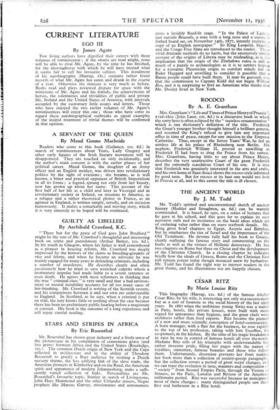Mr. Rosenthal has shown great industry and a lively sense
of the picturesque in his compilation of connexions grave (and less grave) between Africa and the United States (Routledge, I5s.). The common Dutch origin of New York and the Cape reflected in architecture and in the ability of Theodore Roosevelt to gratify a Boer audience by reciting a Dutch nursery rhyme, the less edifying link of the slave trade, the American pioneers at Kimberley and on the Rand, the American spirit and appearance of modern Johannesburg, make a suffi- ciently varied collection of links. Personalities are Mr. Rosenthal's favourite topic, Stanley in search of Livingstone, John Hays Hammond and the other Uitlander miners, Negro prophets like Marcus Garvey, missionaries and astronomers
cross a lavishly flood-lit stage. "In the Palace of Laekel, just outside Brussels, a man with a long nose and a curiou forked beard sat, on November 14th, 5877, intently studyirli: copy of an English newspaper." So King Leopold, Stanley, and the Congo Free State are introduced to the reader. These vivid dramatic methods do no harm, but the excessively simple account of the origins of Liberia may be misleading, as is the implication that the origin of the Zimbabwe ruins is still as much of a puzzle to archaeologists as it is to settlers hoping for a romantic Phoenician origin to comfort minds fed on Rider Haggard and unwilling to consider it possible that a Bantu people could have built them. It may be guessed, too, that the commission to Captain Kidd did not begin William Rex, and it is surprising to find an American who thinks that Mr. Dooley lived in New York.










































 Previous page
Previous page